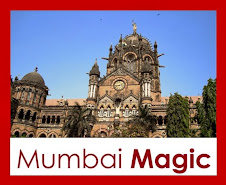- By Deepa Krishnan
There's a little pink house in Dharavi, where dreams are made.
There's a little pink house in Dharavi, where dreams are made.
When you look at it, it doesn't seem very different from many others in the area. What sets it apart is kids like this one below, who come here with stars in their eyes.
This little kid is Gulam Mustafa Khan. He is 11 years old, and he wants to be a movie star. Every Sunday, his mother brings him to this little pink house, to learn acting and dancing.
Sitting next to Gulam and his mother is Ikram. He is Gulam's "mamu" - his mother's brother. Irfan wants to become a dancer.
And here is the man who they hope will make these dreams come true: Baburao Lad. Producter, actor, teacher, dancer, painter, photographer - Baburao is a multi-talented guy who polishes and converts Dharavi's many hopefuls into star material.
Baburao has even published a book: it's called Acting Master, and it has all the do's and don'ts for success in Bollywood. The loft of the pink house is Baburao's studio, where the magic happens.
I watched as a Bollywood number was taught.Baburao has even published a book: it's called Acting Master, and it has all the do's and don'ts for success in Bollywood. The loft of the pink house is Baburao's studio, where the magic happens.
The moves are just what every fledgeling Bollywood aspirant needs - straight out of popular films. I asked Gulam what he was learning. "Rowdy Rathore", he said to me. "I'm learning acche acche steps from Rowdy Rathore."
But dancing is not enough if you have to be a star. So Baburao teaches acting, fighting and modelling.
And all manner of other skills:
The classes cost Rs 500 per month, with a Rs 2000 joining fee. This is far less expensive than similar classes in non-slum areas. But going by the number of eager folks coming to the class, it looks like in this pink house at least, the City of Dreams is alive and kicking. Enjoy the show :)
The classes cost Rs 500 per month, with a Rs 2000 joining fee. This is far less expensive than similar classes in non-slum areas. But going by the number of eager folks coming to the class, it looks like in this pink house at least, the City of Dreams is alive and kicking. Enjoy the show :)

























